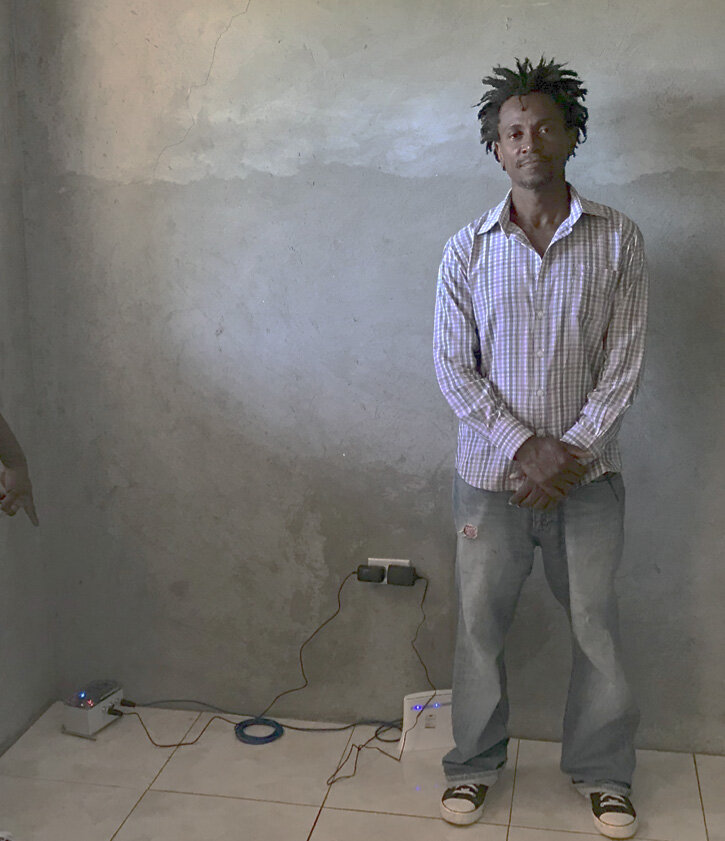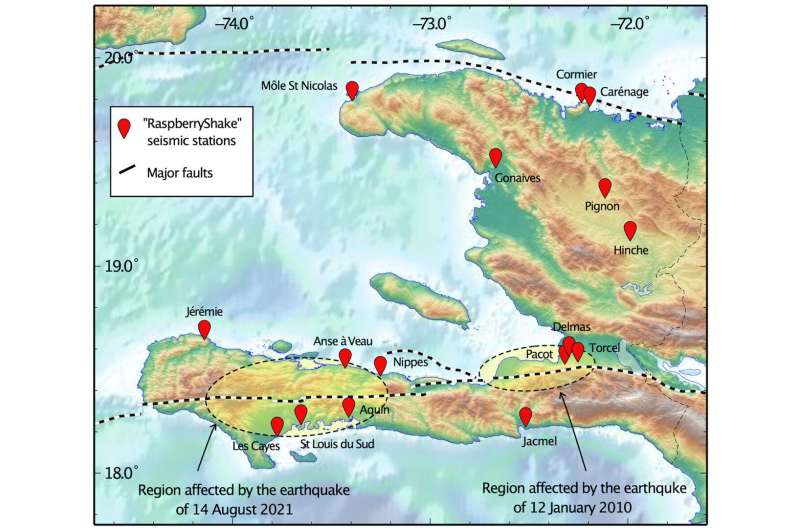
Citizen seismology helps decipher the 2021 Haiti earthquake (Image Credit: Phys.org)

On August 14, 2021, a magnitude 7.2 earthquake struck Haiti, leaving 2,500 dead, 13,000 injured and roughly 140,000 houses destroyed. This came 11-years after Haiti was struck by a 7.0 earthquake that devastated the capital Port-au-Prince and its surrounding areas.
Chronic insecurity and a dearth of state resources means Haiti lacks a fully operational seismological network, as found in other earthquake-prone countries. Yet thanks to low-cost, low-maintenance seismometers hosted by private individuals, researchers were able to gauge and measure aftershocks, as well as map the fault responsible for the August 2021 earthquake.
A French-Haiti collaborative group stated equipping inexpensive, simple-to-operate seismometers in private homes from 2019 to collect information, increase earthquake awareness and cultivate grassroots protection initiatives. When the 2021 earthquake struck, research co-author Yo Fukushima from Tohoku University’s International Research Institute for Disaster Science was on hand to analyze satellite imagery that validated and strengthened the results obtained from the seismometers. “The group of ‘citizen seismologists’ enabled us to characterize the 2021 earthquake within a few days,” said Fukushima.
The devices, which were made by the company Raspberry Shake, connected to the internet and produced data published in real-time on an open-access website. Scientists worked directly with the participants to provide a better understanding of the seismic phenomena, creating a unique channel of exchange between ordinary citizens and scientists.

The seismometers allowed scientists to locate the over 100 aftershocks that followed the main quake. Machine learning applied to data obtained from the seismometer also enabled scientists to forecast aftershocks. This is crucial, particularly in Haiti, where many buildings are not built to withstand earthquakes, for organizing emergency responses.
They also compared their results to the 2010 earthquake, showing that the fault rupture responsible for the previous earthquake was separated by a 60-km gap.
Fukushima stresses that the citizen seismology is relevant for regions of similar socio-economic levels and where conventional seismology networks are difficult to operate. “The high benefit/cost ratio means this is a vital tool for the rapid response to earthquakes and inspires a community-led approach to disaster prevention.”
The team’s research was published in the journal Science on March 11, 2022.
E. Calais et al, Citizen seismology helps decipher the 2021 Haiti earthquake, Science (2022). DOI: 10.1126/science.abn1045
Citizen seismology helps decipher the 2021 Haiti earthquake (2022, March 14)
retrieved 15 March 2022
from https://phys.org/news/2022-03-citizen-seismology-decipher-haiti-earthquake.html
part may be reproduced without the written permission. The content is provided for information purposes only.





